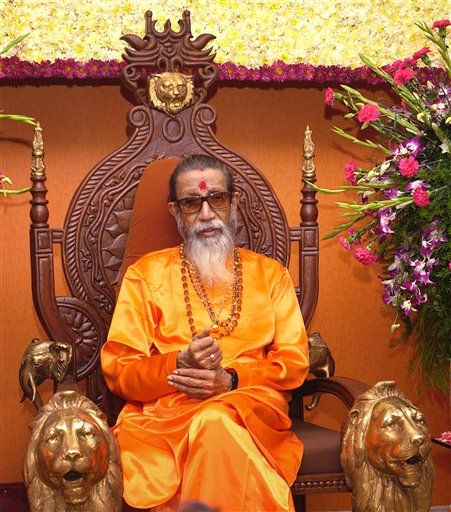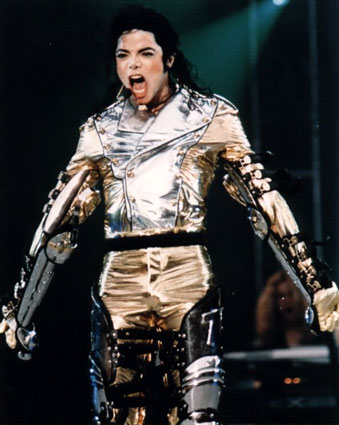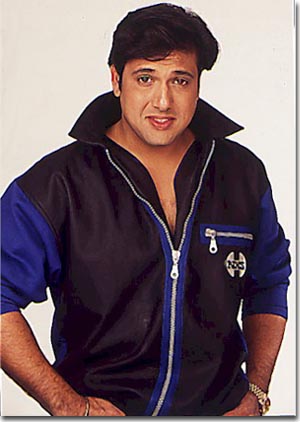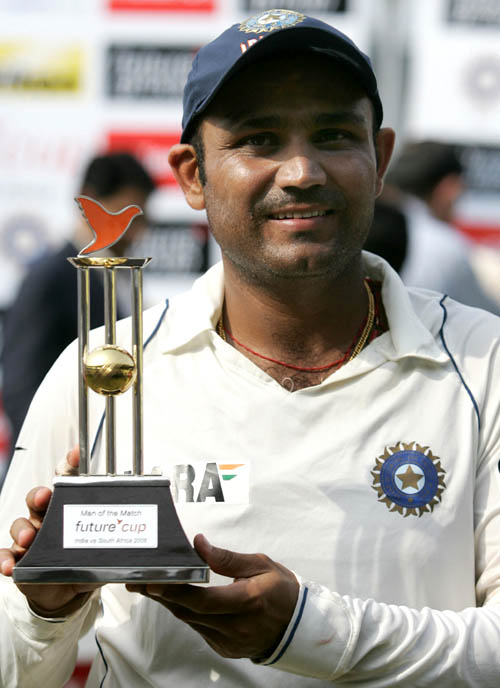The First Atomic Bomb Blast, 1945
The events that took place in a remote area of New Mexico during the predawn hours of July 16, 1945 forever changed the world. In the early morning darkness the incredible destructive powers of the atom were first unleashed and what had been merely theoretical became reality.
 |
The blast,
.034 seconds after detonation |
The test was the culmination of three years' planning and development within the super secret Manhattan Project headed by General Leslie R. Groves. Dr. J. Robert Oppenheimer directed the scientific team headquartered at Los Alamos, New Mexico. An isolated corner of the Alamogordo Bombing and Gunnery Range located 230 miles south of Los Alamos was selected for the test that was given the code-name "Trinity." Even before the bomb was tested, a second bomb was secretly dispatched to the Pacific for an attack on the Japanese city of Hiroshima.
Preparations for the test included the building of a steel tower that would suspend the bomb one hundred feet above ground. Many were apprehensive - there were concerns that the blast might launch a cataclysmic reaction in the upper atmosphere leading to world destruction. Some feared the consequences of radio-active fallout on civilian populations surrounding the test site. Still others feared the test would be an outright dud. Observers were sent to surrounding towns to monitor the results of the blast and medical teams were kept on alert.
Finally, the rains that had delayed the test for almost two weeks subsided and in the darkness of that July morning history was made.
Two days after the blast, General Groves, head of the Manhattan Project, sent a Top Secret memorandum to Secretary of War Stimson detailing the events of that morning. Groves included the description of General Thomas Farrell who was in an observation hut close to the blast along with a hand-full of scientists and other personnel. We join General Farrell's account a few hours before the explosion:
"The scene inside the shelter was dramatic beyond words. In and around the shelter were some twenty-odd people concerned with last minute arrangements prior to firing the shot. Included were: Dr. Oppenheimer, the Director who had borne the great scientific burden of developing the weapon from the raw materials made in Tennessee and Washington and a dozen of his key assistants - Dr. Kistiakowsky, who developed the highly special explosives; Dr. Bainbridge, who supervised all the detailed arrangements for the test; Dr. Hubbard, the weather expert, and several others. Besides these, there were a handful of soldiers, two or three Army officers and one Naval officer. The shelter was cluttered with a great variety of instruments and radios. For some hectic two hours preceding the blast, General Groves stayed with the Director, walking with him and steadying his tense excitement. Every time the Director would be about to explode because of some untoward happening, General Groves would take him off and walk with him in the rain, counseling with him and reassuring him that everything would be all right. At twenty minutes before zero hour, General Groves left for his station at the base camp, first because it provided a better observation point and second, because of our rule that he and I must not be together in situations where there is an element of danger, which existed at both points.
 |
General Leslie R. Groves (left)
and Dr. J. Robert Oppenhiemer |
Just after General Groves left, announcements began to be broadcast of the interval remaining before the blast. They were sent by radio to the other groups participating in and observing the test. As the time interval grew smaller and changed from minutes to seconds, the tension increased by leaps and bounds. Everyone in that room knew the awful potentialities of the thing that they thought was about to happen. The scientists felt that their figuring must be right and that the bomb had to go off but there was in everyone's mind a strong measure of doubt. The feeling of many could be expressed by ''Lord, I believe; help Thou mine unbelief.' We were reaching into the unknown and we did not know what might come of it. It can be safely said that most of those present - Christian, Jew and Atheist - were praying and praying harder than they had ever prayed before. If the shot were successful, it was a justification of the several years of intensive effort of tens of thousands of people statesmen, scientists, engineers, manufacturers, soldiers, and many others in every walk of life. In that brief instant in the remote New Mexico desert the tremendous effort of the brains and brawn of all these people came suddenly and startlingly to the fullest fruition. Dr. Oppenheimer, on whom had rested a very heavy burden, grew tenser as the last seconds ticked off. He scarce breathed. He held on to a post to steady himself. For the last few seconds, he stared directly ahead and then when the announcer shouted 'Now!' and there came this tremendous burst of light followed shortly thereafter by the deep growling roar of the explosion, his face relaxed into an expression of tremendous relief. Several of the observers standing back of the shelter to watch the lighting effects were knocked flat by the blast.
The tension in the room let up and all started congratulating each other. Everyone sensed 'This is it!' No matter what might happen now all knew that the impossible scientific job had been done. Atomic fission would no longer be hidden in the cloisters of the theoretical
 |
The bomb is unloaded
at the base of the tower.
July 13, 1945 |
physicists' dreams. It was almost full grown at birth. It was a great new force to be used for good or for evil. There was a feeling in that shelter that those concerned with its nativity should dedicate their lives to the mission that it would always be used for good and never for evil. Dr. Kistiakowsky, the impulsive Russian, [actually an American and a Harvard professor] threw his arms around Dr. Oppenheimer and embraced him with shouts of glee. Others were equally enthusiastic. All the pent-up emotions were released in those few minutes and all seemed to sense immediately that the explosion had far exceeded the most optimistic expectations and wildest hopes of the scientists. All seemed to feel that they had been present at the birth of a new age - The Age of Atomic Energy - and felt their profound responsibility to help in guiding into right channels the tremendous forces which had been unleashed for the first time in history.
As to the present war, there was a feeling that no matter what else might happen, we now had the means to insure its speedy conclusion and save thousands of American lives." References:
General Farrell's account appears in - Department of State, Foreign Relations for the United States Conference of Berlin (Potsdam) (1945); Lansing, Lamont, Day of Trinity (1965).
How To Cite This Article:
"The First Atomic Bomb Blast, 1945," EyeWitness to History, www.eyewitnesstohistory.com (2003).











0 Comments